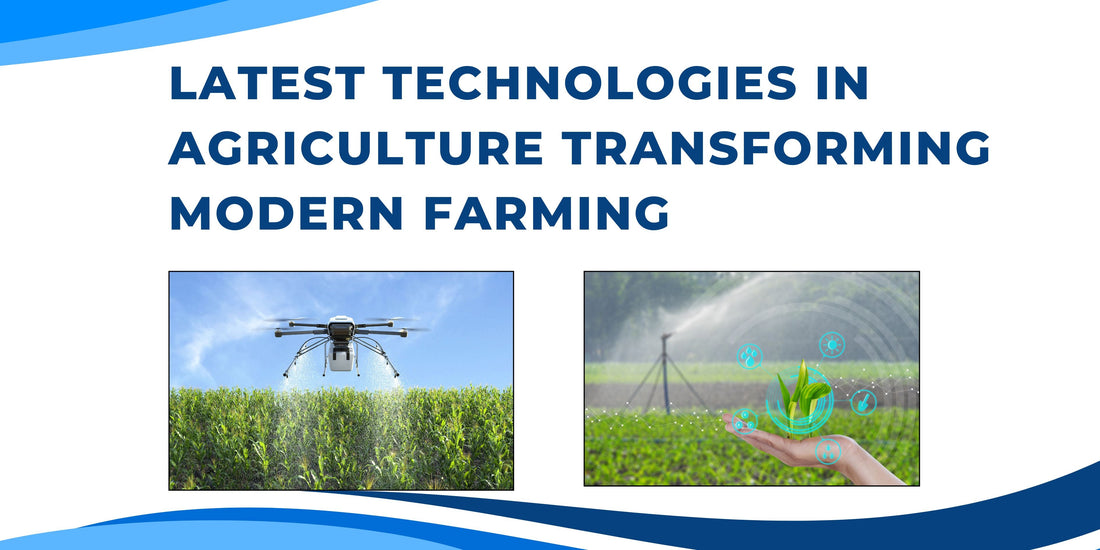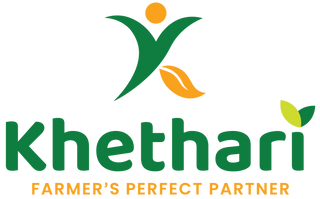
Latest Technologies in Agriculture Transforming Modern Farming
Agriculture, one of the oldest professions in human history, is undergoing a remarkable transformation. With the world population growing rapidly and climate challenges increasing, traditional farming methods are no longer sufficient to meet global food demands. Today, technology is reshaping agriculture, making it smarter, more efficient, and sustainable. From precision tools to biotech innovations, farmers now have access to a wide array of solutions to enhance productivity and ensure crop health. Let’s explore the latest technologies making a difference in modern farming.
1. Precision Farming: Smart Decision-Making for Better Yields
Precision farming is revolutionizing how crops are cultivated. By leveraging GPS technology, IoT sensors, and advanced data analytics, farmers can monitor soil conditions, moisture levels, and nutrient content in real time. This helps in making precise decisions regarding:
- Irrigation: Watering crops only when and where necessary, saving water and reducing costs.
- Fertilization: Applying fertilizers based on actual nutrient requirements, avoiding overuse of chemicals.
- Pest Control: Identifying pest infestations early and treating them locally rather than spraying the entire field.
Example: A farmer can use soil sensors to detect nutrient deficiencies and apply the correct biofertilizers like Trichoderma or Pseudomonas only where needed, improving crop health and reducing chemical use.
2. Drones and Aerial Imaging: Eyes in the Sky
Drones equipped with high-resolution cameras and multispectral sensors are transforming crop monitoring. They provide a bird’s-eye view of the entire farm, helping farmers identify:
- Crop health issues
- Pest and disease outbreaks
- Water stress and irrigation problems
Benefits:
- Early detection prevents widespread damage
- Reduces labor costs and time spent in field inspections
- Supports targeted interventions for better yield
Practical Tip: Some drones can even spray fertilizers or pesticides with precision, reducing waste and improving efficiency.
3. Smart Irrigation Systems: Efficient Water Management
Water scarcity is a major challenge for agriculture. Smart irrigation systems use soil moisture sensors, weather forecasts, and automated controllers to deliver the exact amount of water needed by crops.
Advantages:
- Conserves water resources
- Prevents overwatering and nutrient leaching
- Ensures healthy crop growth and higher productivity
Example: Drip irrigation integrated with IoT devices can water crops even in remote areas automatically, ensuring optimal growth throughout the season.
4. Robotics and Automation: Reducing Manual Labor
Labor shortages and high labor costs have driven the adoption of robotics in agriculture. Modern robots can perform tasks such as:
- Planting seeds
- Weeding and thinning crops
- Harvesting fruits and vegetables
Benefits:
- Consistent and precise operations
- Saves time and effort
- Allows farmers to focus on crop management strategies
Example: Automated harvesters for crops like tomatoes or cotton help reduce losses and ensure faster market delivery.
5. Biotechnology and Biofertilizers: Healthier Crops, Healthier Soil
Advancements in biotechnology have led to the development of high-yield, pest-resistant crop varieties. Simultaneously, biofertilizers and biopesticides are gaining popularity as eco-friendly alternatives to chemical inputs.
Popular solutions:
- Trichoderma and Pseudomonas: Improve soil fertility, enhance root growth, and increase crop resistance to diseases.
- Potassium-Solubilizing Bacteria: Make essential nutrients available to plants naturally, reducing dependency on chemical fertilizers.
Impact: These biological solutions support sustainable farming, reduce environmental damage, and improve long-term soil health.
6. Artificial Intelligence (AI) and Data Analytics: Predict, Plan, Perform
AI and machine learning are helping farmers predict weather patterns, disease outbreaks, and market trends. By analyzing historical data, AI systems can recommend:
- Optimal planting and harvesting times
- Crop rotation plans for better soil health
- Efficient resource allocation to reduce costs
Example: AI-powered mobile apps can alert farmers about pest infestations in their region and suggest timely interventions, increasing yield and profitability.
7. Vertical Farming and Controlled Environment Agriculture (CEA)
Urbanization has limited land availability, prompting innovative solutions like vertical farming and greenhouse cultivation. These systems grow crops in stacked layers or controlled environments, ensuring:
- Year-round production
- Reduced dependency on weather conditions
- Efficient use of space and resources
Example: Hydroponic farms use nutrient-rich water instead of soil, producing leafy greens with higher yield and minimal water use.
8. Blockchain Technology for Supply Chain Transparency
Blockchain ensures traceability from farm to fork, helping farmers secure fair pricing and consumers trust the origin of their food.
Benefits:
- Transparent supply chain
- Reduced fraud and middlemen
- Better income for farmers
Example: A farmer can track the journey of organic vegetables from the field to supermarket shelves, enhancing credibility and premium pricing.
9. IoT and Smart Farming Devices
Internet of Things (IoT) devices are now common on farms, monitoring everything from soil health to machinery performance. Examples include:
- Smart sensors for temperature, humidity, and soil pH
- Automated tractors and harvesters
- Farm management software that integrates data for better planning
Impact: Farmers can take real-time decisions, reduce operational inefficiencies, and increase overall productivity.
Conclusion: Embracing Technology for a Sustainable Future
Modern agriculture is no longer about guesswork. Technologies like precision farming, drones, AI, biofertilizers, and robotics are helping farmers optimize every step of crop production. By adopting these innovations, farmers can:
- Increase yield and profitability
- Reduce environmental impact
- Ensure sustainable use of resources
